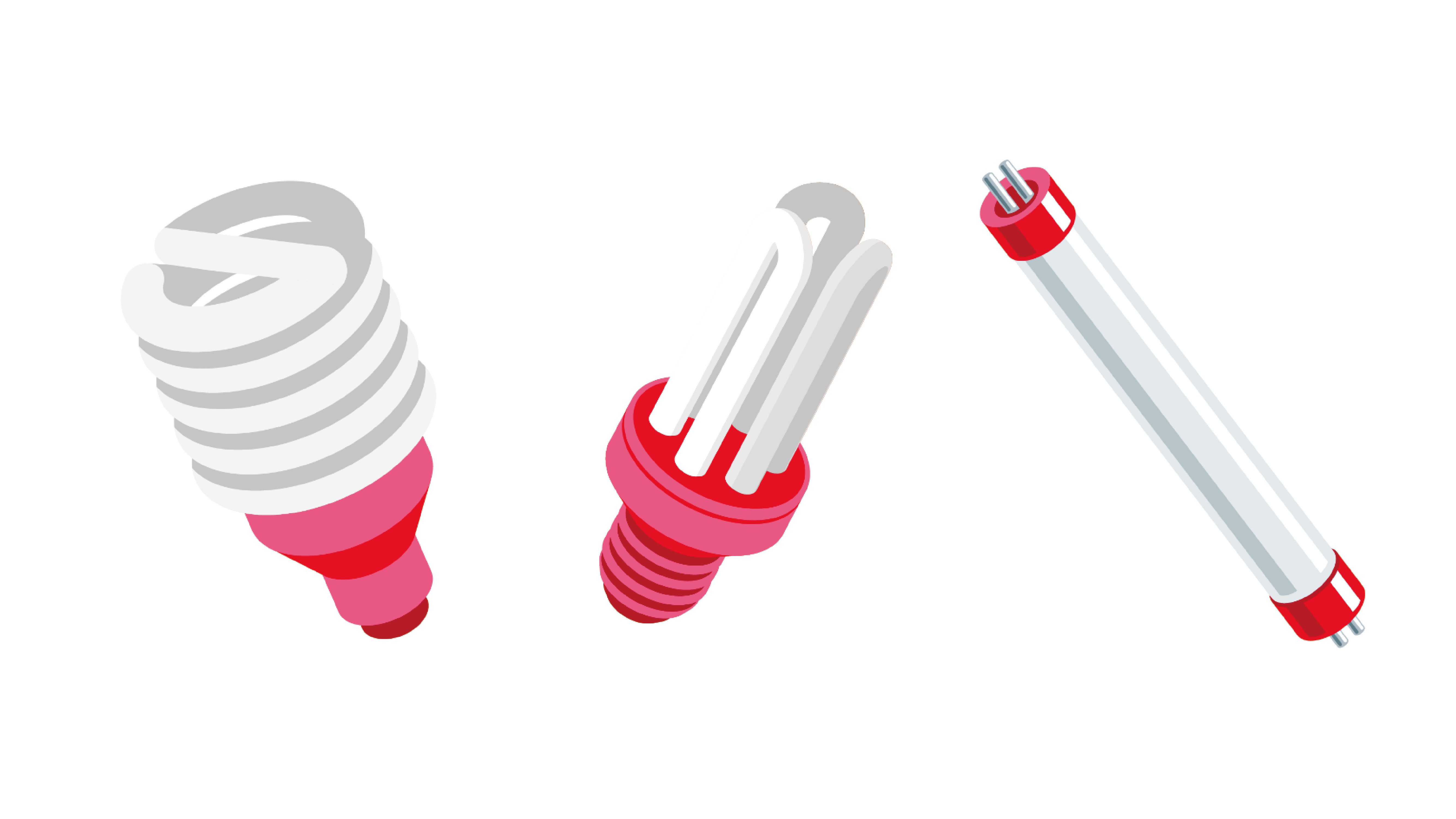Fluorescent Lamp Recycling Programme - FAQ

Fluorescent lamps contain small amounts of mercury, on average, 4 milligrams or less of mercury which is about 1/100th of the amount found in a mercury thermometer, while fluorescent tubes may contain up to 15 milligrams of mercury, depending on the type, brand and date of manufacture. In case of improper disposal, it can be hazardous to people and the environment. Over the past 20 years, many lamp suppliers have reduced the amount of mercury in their lamps. Nevertheless, these light sources do not pose a health risk when remained intact.
Even though fluorescent lamps contain a very small amount of mercury, special care should be taken when they break. You are recommended to follow the precautionary measures below:
A. Do not use ordinary residential and commercial floor vacuums for clean-up;
B. Keep the area well ventilated to dilute the mercury vapour released;
C. Wear latex gloves and clean up the fragments carefully;
D. Wipe the affected area with a damp disposable paper towel to remove all glass fragments and mercury drops;
E. Keep all people and pets away from the affected area;
F. Place all fragments along with the cleaning materials into a sealable plastic bag and wash your hands after finishing all the clean-up.
Commercial and industrial premises are not covered by the Programme since these organizations are required to recycle their lamps in accordance with the Waste Disposal Ordinance. As required under the law, any premises that store a significant quantity (e.g. over 500 pieces) of used mercury-containing lamps have to be registered with the EPD as a chemical waste producer who should arrange for proper collection and treatment of the used lamps at the Chemical Waste Treatment Centre (CWTC). The current charge for disposal of spent mercury-containing lamps at the CWTC is HK$1,130 per tonne.
If the estates collect a large quantity, for example over 500 pieces of used fluorescent lamps generated from their residents, they have to register as a chemical waste producer and follow the requirements stipulated under the Waste Disposal Ordinance and Waste Disposal (Chemical Waste) (General) Regulation. The estate management can set up a chemical waste storage area, and follow proper labelling and packaging requirements as currently practiced for managing other chemical wastes. The estates can call the contractor of CWTC to arrange for collection of the lamps.
LED lamps can be handed over to GREEN@COMMUNITY for recycling.
Spent fluorescent lamps collected are delivered to the Chemical Waste Treatment Centre (CWTC) at Tsing Yi for proper treatment. The CWTC has a special treatment facility designed to separate the mercury for recycling, while other components are treated before disposal.
